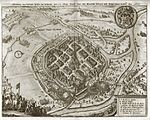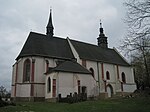Doosan Arena
1955 establishments in Czechoslovakia20th-century architecture in the Czech RepublicCzech First League venuesFC Viktoria PlzeňFootball venues in the Czech Republic ... and 3 more
Multi-purpose stadiums in the Czech RepublicSports venues completed in 1955Sports venues in Plzeň

Doosan Arena, previously known as Stadion města Plzně (Plzeň City Stadium), is a multi-purpose stadium in Plzeň, Czech Republic. It is located in Štrunc Park, near the confluence of the Mže and Radbuza rivers. The stadium is currently used mostly for football matches and is the home ground of FC Viktoria Plzeň. The stadium holds 11,700 people. It is also known as Stadion ve Štruncových sadech (Stadium in Štrunc Park), named after Emil Štrunc, a former regional chieftain of the Sokol Movement (some people incorrectly think it is named after a famous local footballer Stanislav Štrunc).
Excerpt from the Wikipedia article Doosan Arena (License: CC BY-SA 3.0, Authors, Images).Doosan Arena
Štruncovy sady, Pilsen Plzeň
Geographical coordinates (GPS) Address Website External links Nearby Places Show on map
Geographical coordinates (GPS)
| Latitude | Longitude |
|---|---|
| N 49.75 ° | E 13.385555555556 ° |
Address
Doosan Arena
Štruncovy sady 10
301 12 Pilsen, Plzeň
Southwest, Czechia
Open on Google Maps










